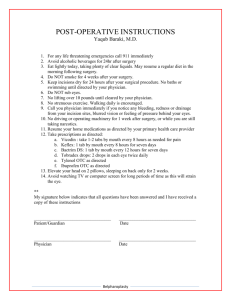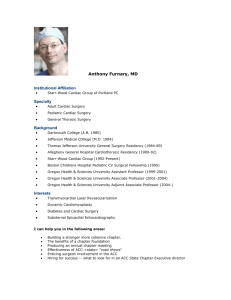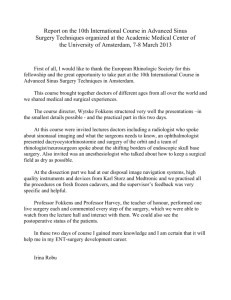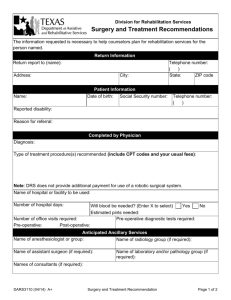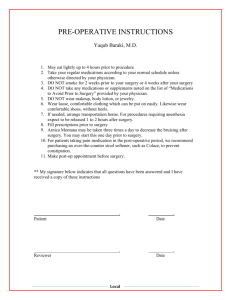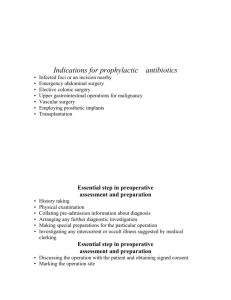A Structured Amiodarone Protocol For The
advertisement
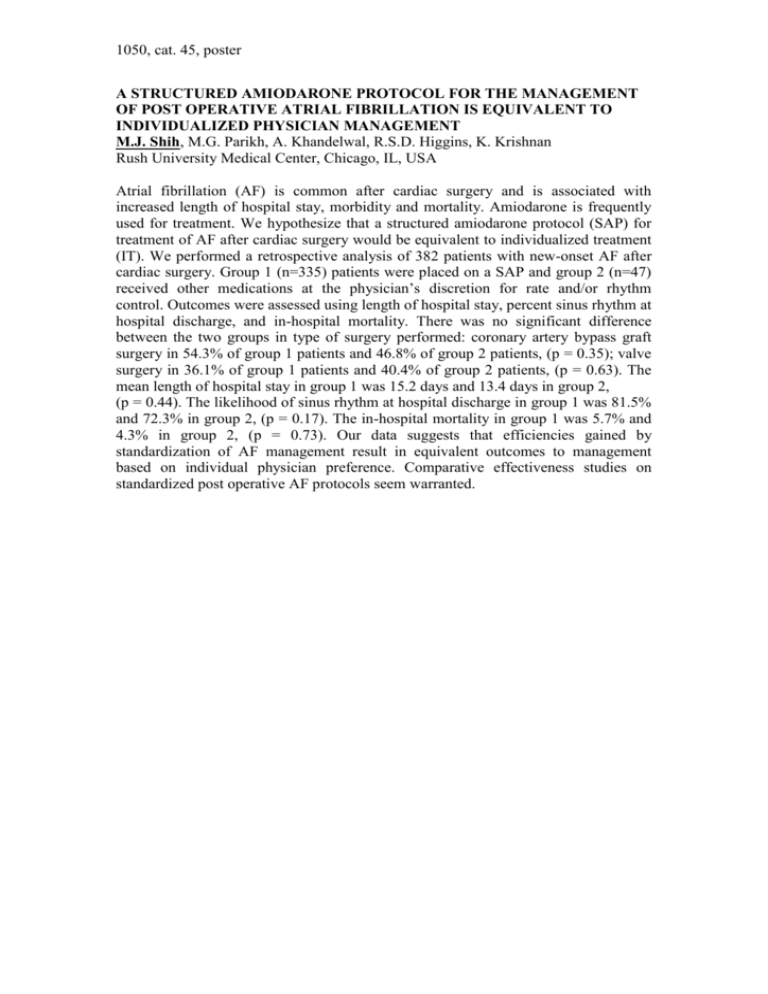
1050, cat. 45, poster A STRUCTURED AMIODARONE PROTOCOL FOR THE MANAGEMENT OF POST OPERATIVE ATRIAL FIBRILLATION IS EQUIVALENT TO INDIVIDUALIZED PHYSICIAN MANAGEMENT M.J. Shih, M.G. Parikh, A. Khandelwal, R.S.D. Higgins, K. Krishnan Rush University Medical Center, Chicago, IL, USA Atrial fibrillation (AF) is common after cardiac surgery and is associated with increased length of hospital stay, morbidity and mortality. Amiodarone is frequently used for treatment. We hypothesize that a structured amiodarone protocol (SAP) for treatment of AF after cardiac surgery would be equivalent to individualized treatment (IT). We performed a retrospective analysis of 382 patients with new-onset AF after cardiac surgery. Group 1 (n=335) patients were placed on a SAP and group 2 (n=47) received other medications at the physician’s discretion for rate and/or rhythm control. Outcomes were assessed using length of hospital stay, percent sinus rhythm at hospital discharge, and in-hospital mortality. There was no significant difference between the two groups in type of surgery performed: coronary artery bypass graft surgery in 54.3% of group 1 patients and 46.8% of group 2 patients, (p = 0.35); valve surgery in 36.1% of group 1 patients and 40.4% of group 2 patients, (p = 0.63). The mean length of hospital stay in group 1 was 15.2 days and 13.4 days in group 2, (p = 0.44). The likelihood of sinus rhythm at hospital discharge in group 1 was 81.5% and 72.3% in group 2, (p = 0.17). The in-hospital mortality in group 1 was 5.7% and 4.3% in group 2, (p = 0.73). Our data suggests that efficiencies gained by standardization of AF management result in equivalent outcomes to management based on individual physician preference. Comparative effectiveness studies on standardized post operative AF protocols seem warranted.


